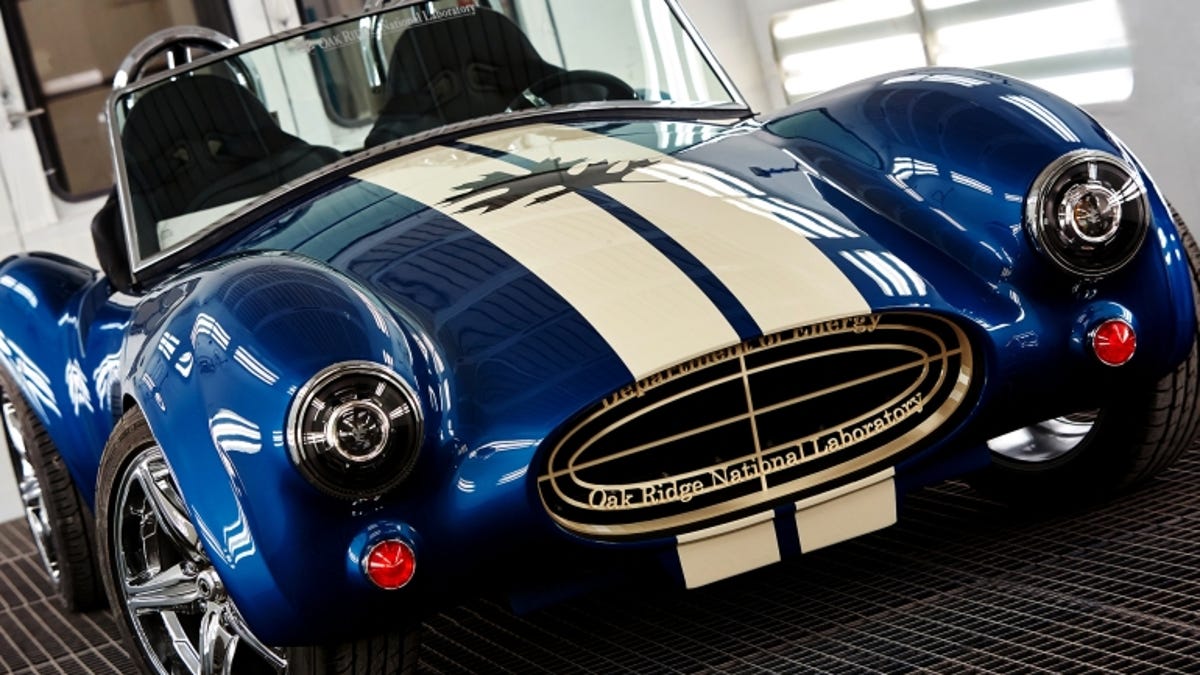The rare 1965 Shelby Cobra rolls off the printbed
At the North American International Auto Show, a 1965 Shelby Cobra 427 with a difference is on display.

AC's Shelby Cobra is at the very pinnacle of classic sports car design, with its gorgeous, sleek, glossy curves. And the roadster -- production of which began in 1962, combining a British chassis with a high-performance Ford V8 engine -- is not just beautiful, but also rare. Its total production run from 1962 to 1965 amounted to just 1,003 in total.
Among the rarest and most coveted of all is the 1965 Shelby Cobra 427, and in celebration of the car's 50th anniversary, it's received an overhaul with modern technology. Packing a 3D-printed chassis and an electric motor courtesy of the US Department of Energy's Oak Ridge National Laboratory, the car is currently on display at the North American International Auto Show in Detroit.
"Our goal is to demonstrate the potential of large-scale additive manufacturing as an innovative and viable manufacturing technology," leader of ORNL's Manufacturing Systems Research group Lonnie Love said. "We want to improve digital manufacturing solutions for the automotive industry."
Of the completed car's 1,400 pounds (635kg), roughly 500 pounds (227kg) was 3D printed, out of a strong composite material that contains 20 percent carbon fibre. It was printed on a special-purposed 3D printer developed by the ORNL -- the Big Area Additive Manufacturing printer, which can print single pieces in sizes greater than one cubic metre. This printer can also print components 500 to 1,000 times faster than other current industrial manufacturing machines.
In all, the 3D-printed Cobra took six weeks to design, manufacture and assemble, with the actual printing taking around 24 hours total.
"You can print out a working vehicle in a matter of days or weeks," Love said. "You can test it for form, fit and function. Your ability to innovate quickly has radically changed. There's a whole industry that could be built up around rapid innovation in transportation."
Like you might expect with 3D printing -- and similar to the world's first 3D-printed car, the Strati (also printed by the ORNL) -- the car parts came out looking a bit rough around the edges. The glossy finish was applied by Knoxville, Tennessee-based company Tru-Design, which specialises in carbon fibre and fibreglass car parts. The Strati -- which made its debut at the 2014 SEMA show in Las Vegas -- is also making an appearance at NAIAS, printed live on the showfloor as attendees watch.
You can see more pictures of the Cobra being made on the ORNL's Flickr page.

